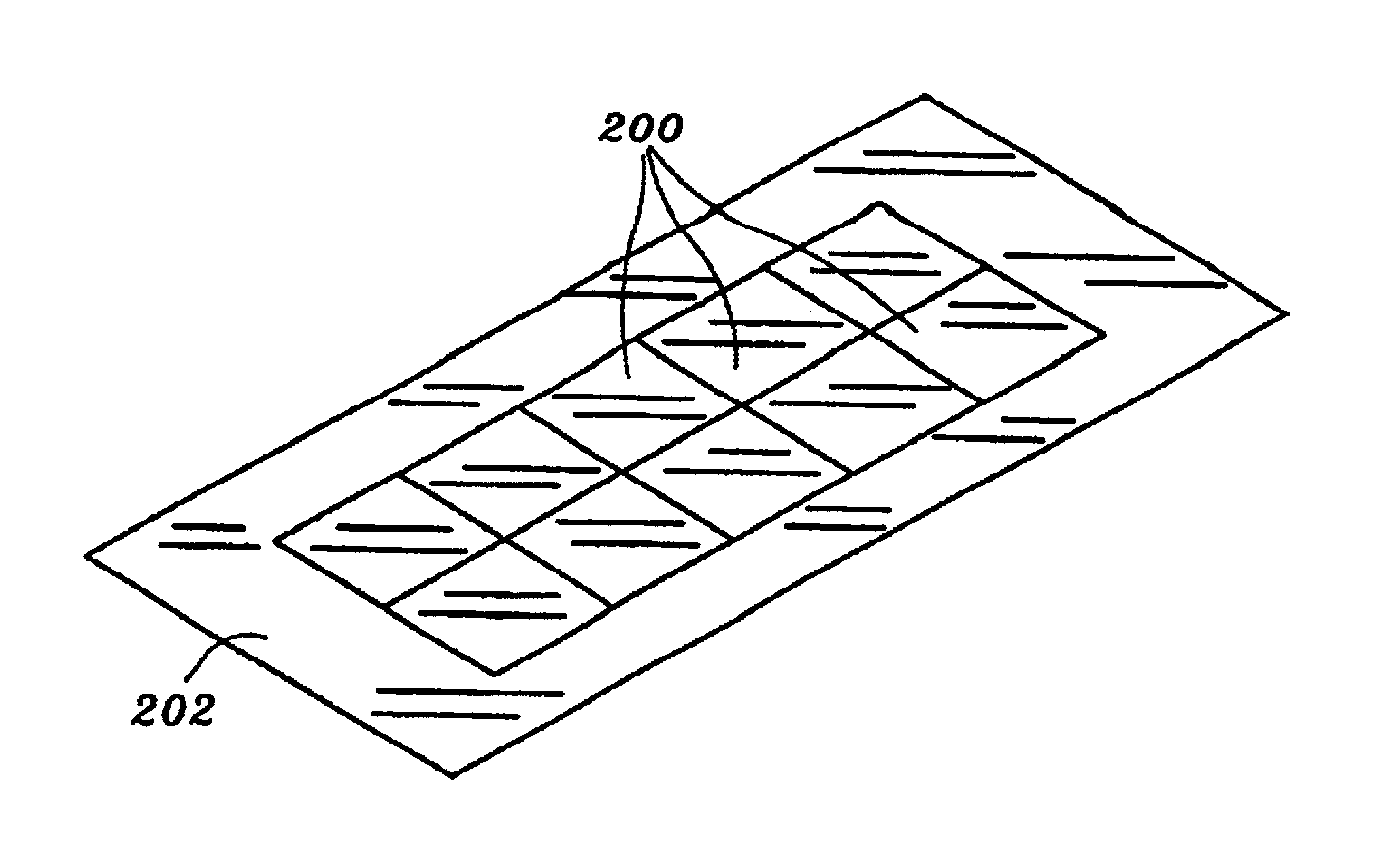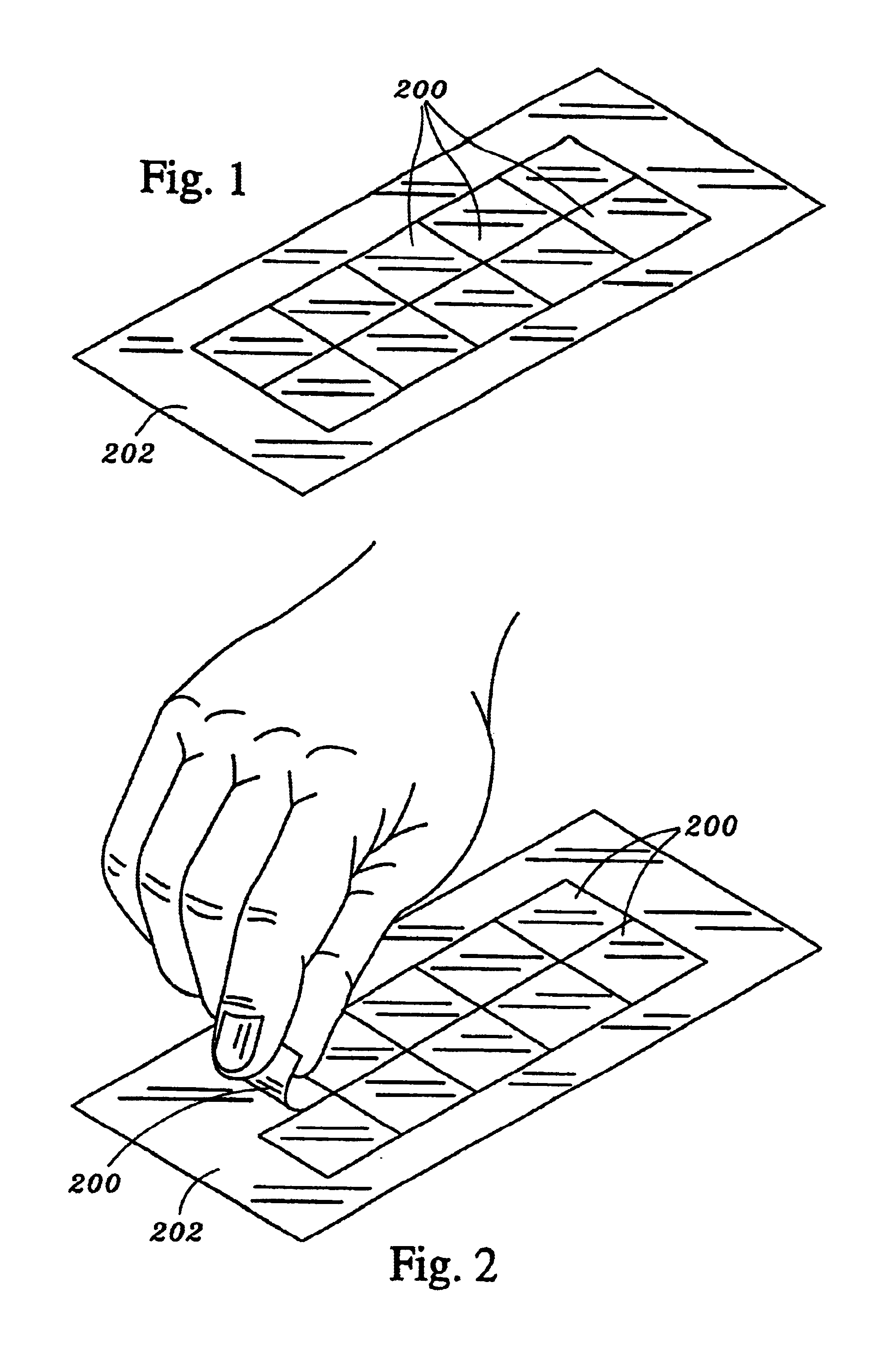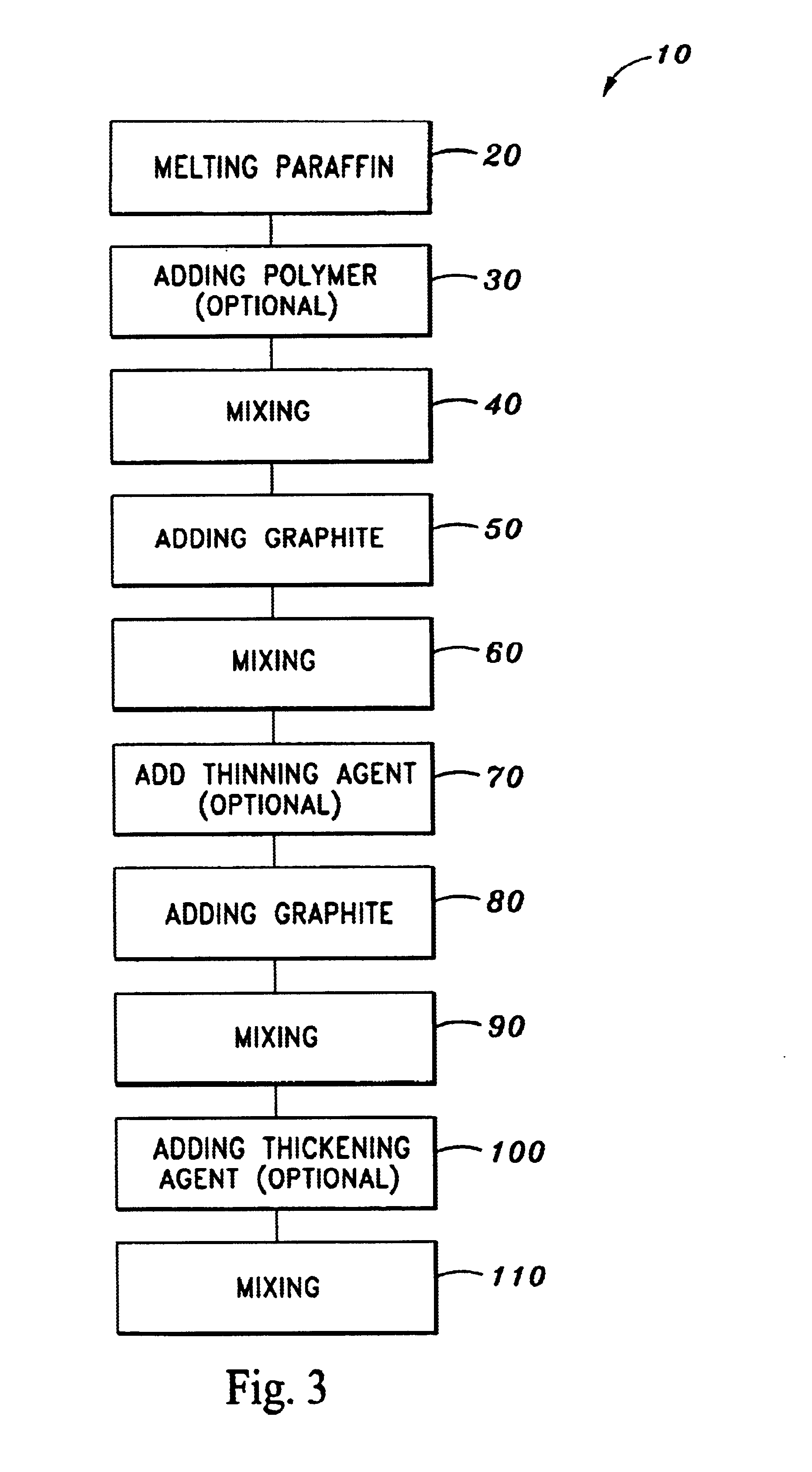Phase change thermal interface composition having induced bonding property
a technology of phase change and thermal interface, applied in the direction of chemistry apparatus and processes, semiconductor/solid-state device details, coatings, etc., can solve the problems of reducing the life of components by 50%, intermittent or permanent changes, catastrophic failure of components, etc., to achieve convenient packaging, shipping and application, and effective heat conductivity
- Summary
- Abstract
- Description
- Claims
- Application Information
AI Technical Summary
Benefits of technology
Problems solved by technology
Method used
Image
Examples
Embodiment Construction
The detailed description set forth below in connection with the appended drawings is intended merely as a description of the invention, and is not intended to represent the only form in which the present invention may be constructed or utilized. The description sets forth the functions and sequence of steps for construction and implementation of the invention in connection with the illustrated embodiments. It is to be understood, however, that the same or equivalent functions and sequences may be accomplished by different embodiments that are also intended to be encompassed within the spirit and scope of the invention.
The composition of the present invention comprises a durable wax-like, thermally conductive interface compound whose purpose is to complete a thermally conductive path from a heated element to a heat sink, that is exceptionally more durable, and possess better re-flow properties than prior art compositions. In this regard, the use of heat conducting materials to transf...
PUM
| Property | Measurement | Unit |
|---|---|---|
| thickness | aaaaa | aaaaa |
| thickness | aaaaa | aaaaa |
| temperature | aaaaa | aaaaa |
Abstract
Description
Claims
Application Information
 Login to View More
Login to View More - R&D
- Intellectual Property
- Life Sciences
- Materials
- Tech Scout
- Unparalleled Data Quality
- Higher Quality Content
- 60% Fewer Hallucinations
Browse by: Latest US Patents, China's latest patents, Technical Efficacy Thesaurus, Application Domain, Technology Topic, Popular Technical Reports.
© 2025 PatSnap. All rights reserved.Legal|Privacy policy|Modern Slavery Act Transparency Statement|Sitemap|About US| Contact US: help@patsnap.com



